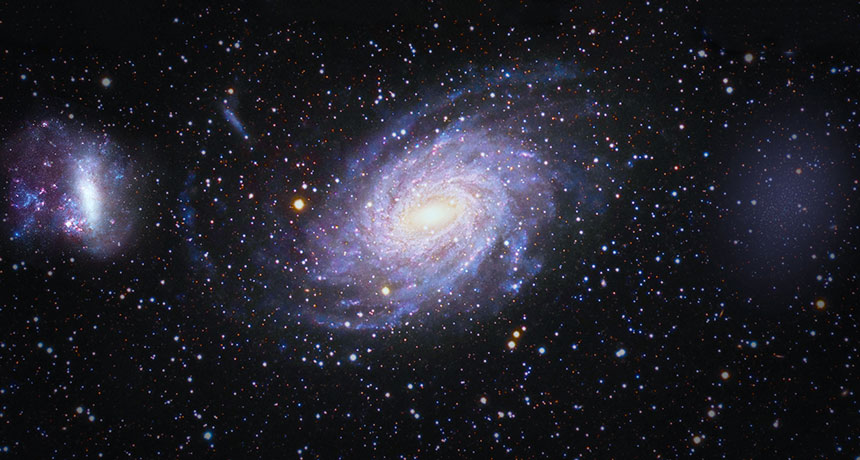Astronomers may have spotted the ghost galaxy that hit the Milky Way long ago
Discovered in Gaia data, Antlia 2 could be the star system scientists have been looking for

GHOSTLY GALAXY The dim galaxy Antlia 2 (faint glow shown at right in this illustration) was found orbiting the Milky Way (center) in 2018. It’s a bit bigger than the Large Magellanic Cloud, another satellite galaxy (left), but contains far fewer stars.
V. Belokurov/Univ. of Cambridge/CCA, based on the images by Marcus and Gail Davies and Robert Gendler







